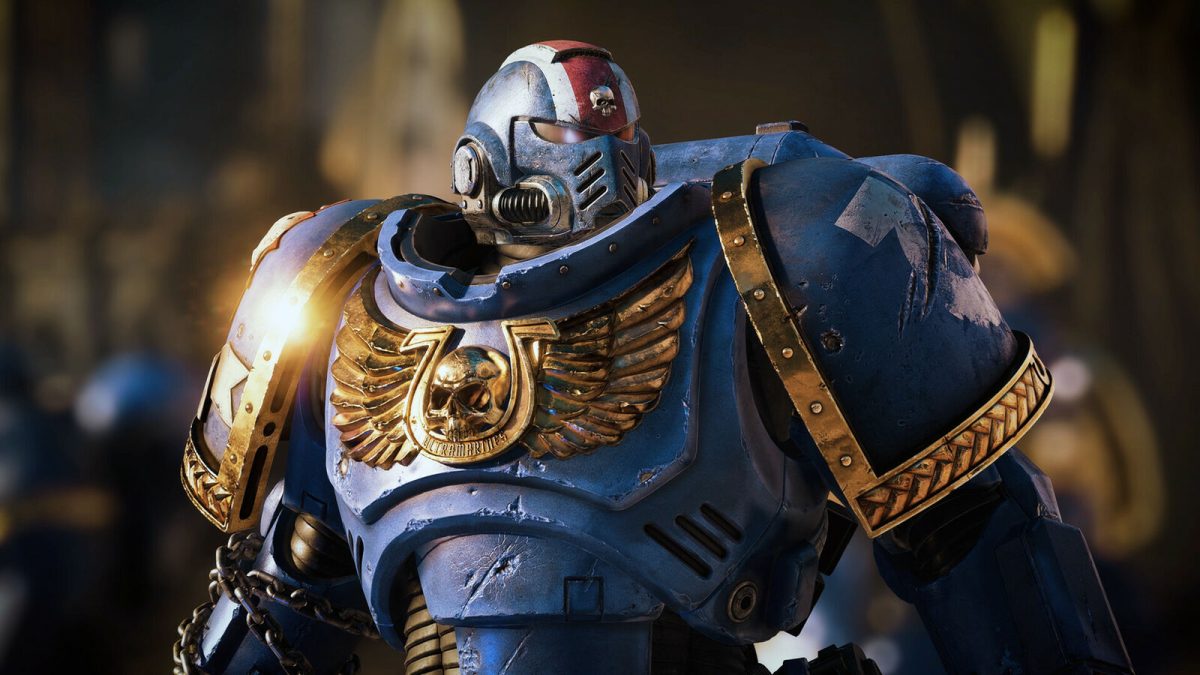The news that Henry Cavill will be working on a Warhammer 40K series has set the internet ablaze. Long-time Warhammer 40K fans have been begging for a film or television adaptation of the franchise for years. Plus, a behind-the-scenes drama that led to Cavill leaving The Witcher to go to this new project has caught the internet’s attention, making them curious about what this new project could look like.
But what is Warhammer 40K, and do you need to see the other 39,999 Warhammers before you start? Here is everything you need to know.
What is Warhammer 40K?
The Warhammer franchise first started as a tabletop wargame created by Games Workshop. The first game in the franchise, Warhammer Fantasy Battle, launched in 1983. This game had a dark, but mostly traditional fantasy theme. Then, in 1987, Games Workshop launched Warhammer 40K, a sci-fi counterpart to Warhammer Fantasy Battle that used many of the same mechanics.
However, over time both games developed their own fanbases and grew in different ways. So today, the Warhammer in the Warhammer 40K name is a vestigial legacy title that doesn’t really link to the game or its lore. So unlike Lord Of The Rings, the factions are not fighting for a specific hammer with magical properties. It should be noted that while Warhammer and Warhammer 40K are not directly connected today, their settings share some details and use many of the same thematic elements.
Both games are miniature wargames, meaning that players use tiny figurines, which players often paint themselves, to create an army. Players pit these armies against other players’ armies in strategic battles. Each faction and miniature within it has its own stats and abilities, meaning that players have to spend a long time experimenting to decide the best team for their playstyle.
Since their launch, Warhammer and Warhammer 40K have gone from strength to strength. Both have had several rules updates, with new miniature figures added with each new edition. Warhammer has expanded into a giant franchise, with several spin-off games being released. Many of these spin-offs, like football-parody Bloodbowl and small-tactics game Necromunda, have developed sizable fanbases of their own.
The franchise has also expanded into other media. Today there is a vast range of tabletop roleplaying games, novels, and videogames set within the 40K universe, all putting a unique spin on the game’s lore and mechanics.
What is Warhammer 40K about?
Warhammer 40K is set at the turn of the 42nd Millenium (hence the 40K in the name). In this world, humanity has spread out into space, forming the Imperium of Man, an empire that comprises more than a million worlds. However, the Imperium is not a good place, as those who run the Imperium are fascists, and most regular people live in abject suffering.
Leading the Imperium is the Emperor of Mankind, who, despite being mortally wounded in battle, can still project a psychic beacon that allows ships to navigate the depths of space. Thus he is kept semi-alive via a device called the Golden Throne, which requires a massive number of daily sacrifices to keep it functional.
Plus, it turns out that humans are not the only beings in the universe, as they soon discover and quickly go to war with the Orks, the Aeldari (who are effectively 40K’s version of High Elves,) the planet-devouring and Xenomorph-like Tyranids, and the otherwordly T’au.
To make this worse, interstellar travel is handled via The Warp. The Warp is a parallel universe full of dangerous psychic energy. While some people, called Psykers, can manipulate and use this energy to pull off amazing feats, those who can not do this will suffer a horrible fate if exposed to this energy. To make things worse, The Warp is full of Daemons. These Daemons are desperate to break out and destroy all living beings within the other universe and often attempt to manipulate people into doing their dark bidding. And on top of this, the Chaos gods lurk in the shadows, trying to meet their own, frequently dark, goals.
Most 40K works, especially those focused on characters who exist within the Imperium, will start with some variation on the following quote:
“To be a man in such times is to be one amongst untold billions. It is to live in the cruelest and most bloody regime imaginable. These are the tales of those times. Forget the power of technology and science, for so much has been forgotten, never to be re-learned. Forget the promise of progress and understanding, for in the grim dark future there is only war. There is no peace amongst the stars, only an eternity of carnage and slaughter, and the laughter of thirsting gods.”
And this perfectly summarizes 40K’s lore and aesthetic, as there is no hope and no heroes. Every faction is constantly doing horrible things to themselves and one another. Due to this, Warhammer coined the term “Grimdark” for settings or narratives that are exceptionally horrible with no hope.
It should be noted that 40K features loads of satirical elements, with the original writers poking fun at British politics of the time. Most of the lore puts a dark twist on Margaret Thatcher’s time as British Prime Minister and the political conflicts of the late 1980s. And this is why, even today, 40K and its story feels so distinct.

